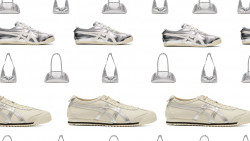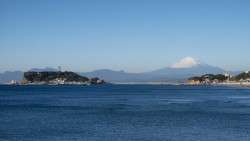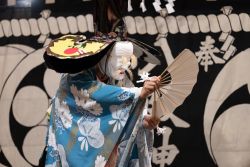
Originally published on metropolis.co.jp on October 2012

An arch of manmade islands and industrial canals stretches from the southern end of Yokohama all the way up past Tokyo and back down to Kisarazu City. The shore is lined with countless logistics facilities and is largely inaccessible by land. To a certain subset of outdoor enthusiasts, the fortress-like structures lining the canals along with the barnacle encrusted surf breakers and jetties—and the open water that lies beyond—are a gold mine for their favorite pastime.
Lateolabrax japonicus, better known as the Japanese sea perch or sea bass, is a prolific game fish found in great numbers all over Tokyo Bay. Most would-be recreational anglers who come to Japan from abroad never get wind of the existence of this world class fishery, let alone its size. After all, there is next to no information related to sport fishing in Japan published in English or other languages. But for residents of the Kanto area, a day spent fishing for sea bass takes less time, and is in many cases, less expensive than heading to the ski slopes, hiking trails, or popular surf breaks.
THE GEAR
Getting into sea bass fishing requires an investment in equipment, but it need not be astronomical. Items like a personal floatation device and fishing rod can often be borrowed from guides, but as a minimum first-time anglers should show up to the dock with their own wet-weather gear, hat, and sunglasses.
Lures are available at one of the many tackle shops in the Kanto area like Sansui and Johshuya, but may also be purchased directly from the guide in some cases. Fishing is just as addictive as any other outdoor pursuit and anglers are known to lay out some serious cash for slick gear and trips once they get a taste of the action.
Nowadays sea bass are primarily targeted on artificial lures, not all that different from those used for catching largemouth bass or perch in freshwater. Saltwater fly tackle in the 6-8 weight range will also do the job if the fish are feeding at the surface.
Japanese tackle is world renowned for its lightweight and high-quality construction. A good few enthusiasts with the financial means make shopping trips to Tokyo exclusively to buy JDM gear to use in their home countries. Prices can run into the hundreds of thousands of yen for a full outfit of rods, reels, and accessories, but on the cheap end, a pretty good sea-bass set up can be purchased brand new for as little as ¥25,000. Most anglers starting out borrow their tackle from the skipper until they are sure they want pursue the sport on a regular basis.
THE PREY

Sea bass are a rugged species, which thrives in most coastal environments, including rivers and shallow tidal zones. It’s not uncommon to see them hanging out in the shadows of narrow drainage canals in built-up areas of Tokyo and Yokohama.
Depending on the time of year, sea bass can be caught near numerous ship berths, platforms, and bridges, or from grassy flats and rocky reefs. Exactly where and what time of day to wet a line depends on a confluence of tides, baitfish activity, water temperature, and the lifecycle of the sea bass themselves. The fish migrate frequently, and are sensitive to fishing pressure and tidal movement, but there are lots for the taking at almost any time of year. On a good day, a group of four anglers can easily catch and release over a hundred fish.
Fall is the season avid sea-bassers look forward to, when the bass gorge on anything that moves to fatten up as they migrate from the shallows to deeper water in preparation to spawn.
This is the season to make trophy catches, and while it becomes easy to get into a school of average-size fish that bite on every cast, experienced anglers tend to avoid the frenzy to focus on points that hold only monsters.
Japanese sea bass can grow to just over a meter in length, but specimens that size are extremely rare, so most avid anglers make a goal of breaking ninety centimeters a few times in their lives. It’s not such a tall order to fill, but requires time on the water and a higher than average sense of finesse.
THE REST
Tokyo Bay as a whole has a wide range of marine habitats—from shallow flats covered with grass and shell beds to a deepwater zone frequented by pelagic sharks. There is also a wide variety of baitfish on which middle to top of the food chain predators like sea bass can feed. They are by far the most popular lure fishing target, but guides can opt to pursue other game fish when conditions are right.
Every summer the Kuroshio (black current) running along Japan’s Pacific coast meanders in the direction of Tokyo Bay, bringing with it a variety of pelagic baitfish and predators. Most noticeable are the schools of dorado, shiira in Japanese, which can be taken on slightly heavier lure tackle. Dorado congregate near buoys, flotsam, and tide lines in large numbers and hunt in packs. Under the right conditions anglers can enjoy sight casting for these slender bodied fish that can jump over a meter above the ocean surface when attempting to get unhooked.
Provided there is a large enough concentration of zooplankton, the mouth of the bay may host schools of large sardines, which means big tuna are not far behind. In recent years catches as high as 70kg have been made in the waters where Tokyo Bay and Sagami Bay meet. Throughout the year schools of other pelagics like Spanish mackerel and yellowtail also enter the lower reaches of the bay.
Back up north, anglers can pursue a variety of rockfish commonly referred to as mebaru or kasago, on ultra-light lure tackle. These fish hold tight against structure and typically feed after sundown, which makes fishing for them an after-five affair. Compared to sea bass, rockfish also require a bit more concentration and finesse, a challenge many anglers appreciate.

THE GUIDES
Although occasionally fishable in small numbers from shore, experienced anglers will tell you the best way to pursue these fish is to ride with one of the numerous Tokyo Bay sea bass guides who utilize speedy skiffs equipped with all the necessary electronics and gear for a successful day of fishing. The guides know their stuff, and offer their services at a reasonable price. If you can afford a night on the town having food and pints with your mates in Shibuya, you will have no trouble paying for your cut of a sea bass charter.
Around the world there are many watersheds seeing declines in fish stocks, which is making times tough, especially tough for sport fishing-related businesses. Despite the absence of sport fishing regulations in Japan, the sea bass fishery thrives, partly due to the species not being widely targeted by commercial fishermen, but also due to a desire among the guides and their patrons to practice sustainable fishing. Guides do not outright prohibit their patrons from keeping their catch, but encourage them to keep only one or two for the skillet and release the rest.
Of the roughly two-dozen full time sea bass guides operating in Tokyo Bay, Akiyuki Mori is perhaps the only fluent English speaker. After getting hooked on chasing striped bass in New England during his college days he made his return to Japan fully intent on making a living as a guide. Weather permitting, he spends nearly every day combing the waters of Tokyo Bay, taking clients from his base in Isogo, Yokohama to as far as necessary to put them on fish. The community of professional sport anglers in Japan is chock full with rowdy lad-ish types and prima donnas, but Aki is very humble about his skill set. He claims not to be an expert, but his regular clients will attest that he’s got a knack for finding fish that few possess. Readers interested in getting on the water with Aki should contact him via his home page: http://fishtokyo.com.
THE CATCH
Sea bass are great eating but because they are known to migrate in and out of less than pristine watersheds it’s suggested that anglers inspect any keeper size specimens for healthy features such as a white belly, silvery grey flank and clean gill area.
The pre-spawn bite starts mid to late October and lasts until late December or early January. During these two months both new and experienced anglers can expect to lose count of how many fish they put on the boat as they learn the finer points of the Tokyo Bay sea bass fishery and make some lasting memories.







